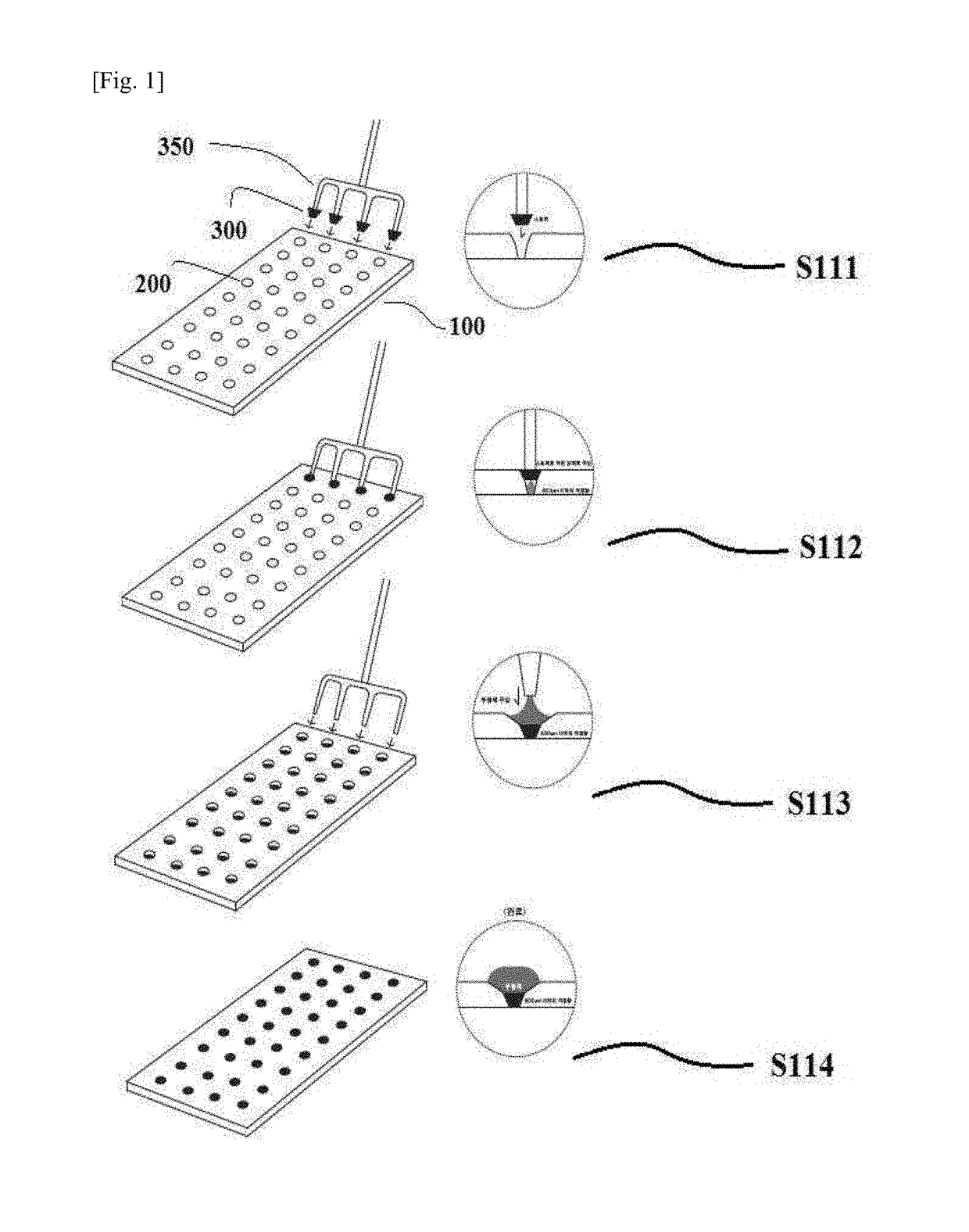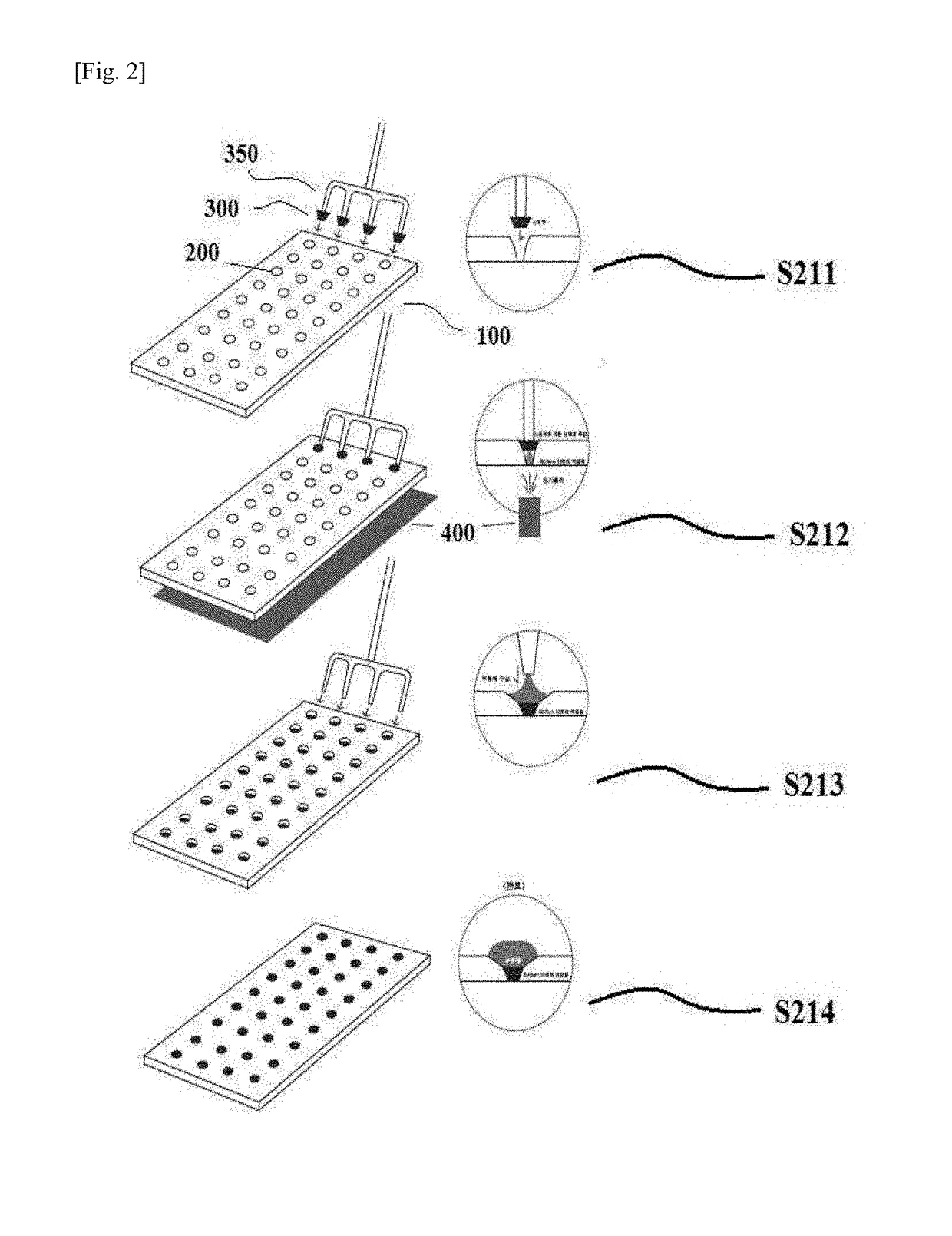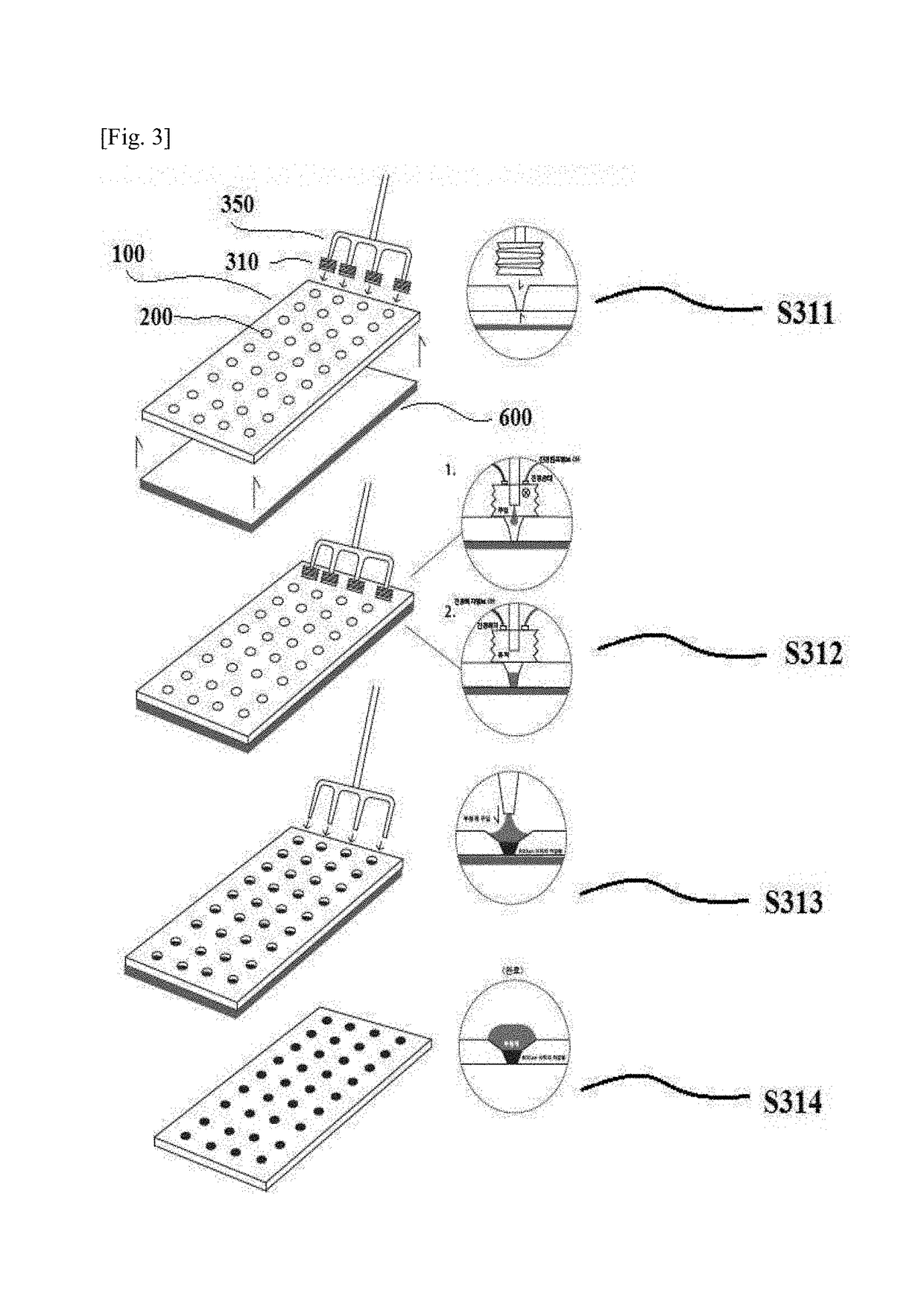Method for manufacturing microneedle by using biocompatible polymer
a biocompatible polymer and microneedle technology, applied in the field of microneedle manufacturing methods using biocompatible polymers, can solve the problems of high degree of skill required to use the needle, difficult to deliver medicine and a cosmetic ingredient to a target site, and difficult to penetrate skin without pain, so as to achieve the effect of convenient skin insertion, accurate delivery of a substantially necessary main ingredient, and constant shap
- Summary
- Abstract
- Description
- Claims
- Application Information
AI Technical Summary
Benefits of technology
Problems solved by technology
Method used
Image
Examples
example 1
re of Microneedle Using Hyaluronic Acid
[0102]Hyaluronic acid and a main ingredient (insulin) was inputted into a tank after measuring the hyaluronic acid and the main ingredient. The hyaluronic acid and the main ingredient were mixed until the entire solution became homogeneous such that the preparation was completed, and then the solution was inputted into a filling tank.
[0103]In accordance with the processes illustrated in FIGS. 1 to 3, the multiple holes were filled with the cross-linked hyaluronic acid solution by using the stoppers and the fine filling needles at the upper side of the mold. After the holes were completely filled, the cross-linked hyaluronic acid solution containing the excipient was applied secondarily, and the cross-linked hyaluronic acid was applied tertiarily. The filled mold was tested by the vision system (medicine) or with the naked eye, such that whether the mold was appropriate was checked, and the mold was moved to the chamber to solidify the polymer. ...
example 2
re of Microneedle for Medicine Purpose by Using Cross-Linked Hyaluronic Acid
[0105]Hyaluronic acid was cross-linked by mixing and incubating the hyaluronic acid and a cross-linking agent In this case, the hyaluronic acid cross-linked by 3 to 5% was used. The process is performed aseptically. Patch type cross-linked hyaluronic acid (HA) (a substitute of a filler) and a main ingredient were inputted into a tank after measuring the patch type cross-linked hyaluronic acid and the main ingredient. The hyaluronic acid and the main ingredient were mixed until the entire solution became homogeneous such that the preparation was completed, and then the solution was transferred into a filling tank.
[0106]In accordance with the processes illustrated in FIGS. 1 to 3, the multiple holes were filled with the cross-linked hyaluronic acid solution by using the stoppers and the fine filling needles at the upper side of the mold. After the holes were completely filled, the cross-linked hyaluronic acid ...
example 3
re of Microneedle for Cosmetic Purpose
[0110]Hyaluronic acid was cross-linked by mixing and incubating the hyaluronic acid and a cross-linking agent. In this case, the hyaluronic acid cross-linked by 3 to 5% was used. The process is performed aseptically. Patch type cross-linked hyaluronic acid (HA) (a substitute of a filler) and a cosmetically active ingredient (Group A: sterilized adenosine, copper peptide, hexapeptide, EGF, glyceryl glucoside (GG) propolis, dipotassium glycyrrhizate, glycyrrhiza extract, and allantoin; and Group B: sterilized adenosine, niacinamide, vitamin E acetate, vitamin C, propolis, dipotassium glycyrrhizate, glycyrrhiza extract, allantoin, and green tea extract) were inputted into a tank after measuring the patch type cross-linked hyaluronic acid and the cosmetically active ingredient. The hyaluronic acid and the main ingredient were mixed until the entire solution became homogeneous such that the preparation was completed, and then the solution was inputte...
PUM
| Property | Measurement | Unit |
|---|---|---|
| temperature | aaaaa | aaaaa |
| temperature | aaaaa | aaaaa |
| temperature | aaaaa | aaaaa |
Abstract
Description
Claims
Application Information
 Login to View More
Login to View More - R&D
- Intellectual Property
- Life Sciences
- Materials
- Tech Scout
- Unparalleled Data Quality
- Higher Quality Content
- 60% Fewer Hallucinations
Browse by: Latest US Patents, China's latest patents, Technical Efficacy Thesaurus, Application Domain, Technology Topic, Popular Technical Reports.
© 2025 PatSnap. All rights reserved.Legal|Privacy policy|Modern Slavery Act Transparency Statement|Sitemap|About US| Contact US: help@patsnap.com



